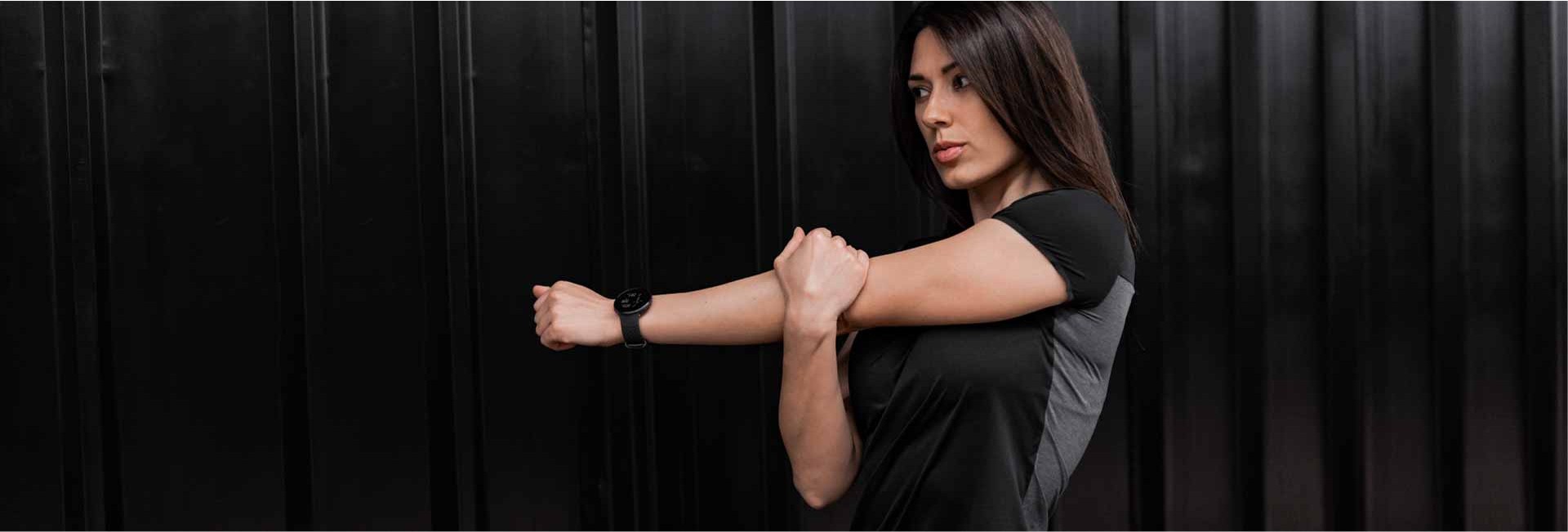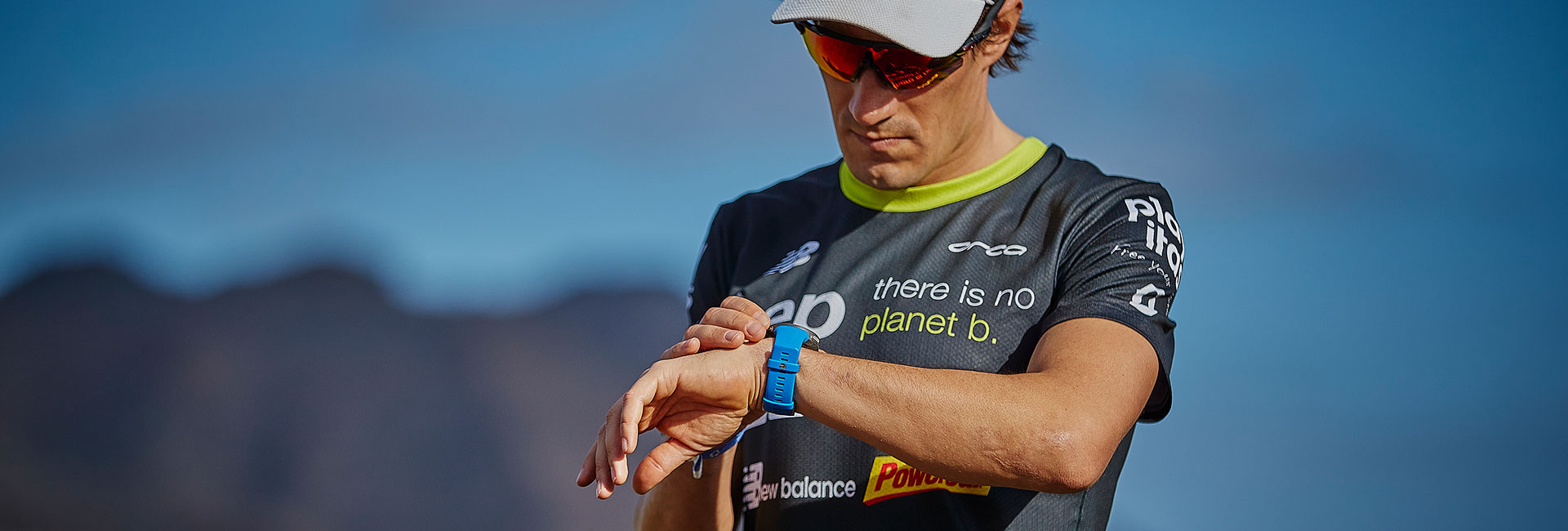Training for any sports or doing hardcore workout sessions is tough – and it’s easy to lose sight of what’s reasonable and what’s, well, too much. Understanding how much rest between workouts is required can take time – but how exactly do you learn this? Try asking the pros.
We chatted with two hugely successful triathletes, Sebastian Kienle and Tim Don, about how they balance their training and recovery plus the tools and practices they use to ensure they rest adequately between workouts. It’s never one thing that makes them do something or make a decision; it’s the combination of data and subjective feelings that guide them on the quest for balance.
LISTEN TO YOUR BODY
When you get injured, overtrained, or burned out, you lose the fun and may lose your passion for the sport altogether. That’s why it’s important to react before it’s too late.
After being a professional athlete for 20 years, Sebastian Kienle is very experienced at listening to his body – but he understands that not everybody is.
“Many non-professional triathletes try to go really hard and think that’s always the best way. In our sport, you learn to ignore all the signs your body is giving you because to succeed; you have to accept that a certain amount of pain comes with the job.”
So, you learn to push through it – to the point that it’s easy to lose sight of how much is too much. “When you get injured, overtrained, or burned out, you lose the fun and may lose your passion for the sport altogether. That’s why it’s important to react before it’s too late,” says Kienle.
Sometimes the problem is not doing too much but not doing enough. It’s an ongoing challenge: when to listen to your body and when it’s just your body trying to avoid the discomfort?
It’s a continuous walk on a thin rope that requires constant effort: on the one hand, you have to ignore some of the signals your body is giving you, and on the other, you have to be wise and mindful about how much you’re body is capable of handling.
TRY ACTIVE RECOVERY
By enhancing the blood flow to your muscles, an active recovery session will help them to heal faster.
“Sometimes athletes are afraid to admit they are tired,” says 4X World Champion and World Record holding triathlete Tim Don. “They just get more tired by not taking rest days or opting for intense training when active recovery would be the smart option.”
So, what exactly is active recovery? When it comes to working out how much rest to have between workouts, this approach is a way to (gently) have the best of both worlds.
Often, triathletes are masters at pushing themselves well beyond their limits and through the pain. They say that’s what makes the reward taste sweeter. But, it’s sometimes hard to recognize the fine line between pushing yourself and harming yourself.
This is where scheduling a light activity session (be it yoga, walking, or swimming) the day after an intense workout. Instead of laying on the couch or pushing yourself at the gym yet again, some gentle exercise will help you to still feel like you achieved something and still speed up your recovery process.
By enhancing the blood flow to your muscles, an active recovery session will help them to heal faster. So, doing some exercise between workouts is ok. The challenge is ensuring the recovery session is energetic enough to increase your blood flow but gentle enough to allow your muscles to heal.
MONITOR YOUR RECOVERY
I monitor my recovery by doing the Orthostatic Test regularly: it indicates how fresh my system is and tells me if I should do more or ease up a little bit.
Experience is valuable in understanding your body and mind, but still, your subjective feeling can be misleading on their own. That’s why smart, reliable data plays a crucial role in stopping you from straying and, if you do, steers you back to the right path.
“Data helps me to avoid mistakes and look for warning signs,” Kienle says. “When my heart rate and the Orthostatic Test show I’m fine, I know I’m good to go. Sometimes my feeling weighs more and reigns over numbers: even if data suggests I’m not recovered, but I feel fine, I don’t necessarily skip a session. If both my data and feeling are off, I’ll take three to four rest days.”
So, what kind of recovery data helps Kienle on his way to the podium? “I monitor my recovery by doing the Orthostatic Test regularly: it indicates how fresh my system is and tells me if I should do more or ease up a little bit. I also monitor my resting heart rate and measure my heart rate variability (HRV) every second day.”
In addition to the physical training load, other stress factors affect recovery. “Before big races, I monitor my overall activity and track my sleep to get a holistic view of my recovery status, including stress from other than training. The stress levels get really high before big races like the Ironman World Championship in Kona when you have to do press conferences and interviews. If you don’t pay attention, you can be quite worn out way before you’re anywhere near the start line. ”
Keeping track of all this data allows Kienle to take shortcuts and get to where he wants to go faster. Experience serves the same purpose but learning by trial and error is a slower path. “Simply put, I check my data before I make a mistake,” he summarizes.
Try Polar’s Orthostatic Test
The Orthostatic Test is an excellent tool for assessing the amount of rest you need between workouts. By measuring both your heart rate and heart rate variability (HRV), it can highlight signs of training-induced fatigue or fluctuations in your autonomic nervous system (ANS). Regularly conducting this test helps athletes understand what their personal baseline looks like when they are training enough or too much.
To conduct Polar’s Orthostatic Test, you’ll need:
- a chest strap heart rate sensor, such as Polar H10, which measures ECG-based heart rate readings (required for accuracy when testing your HRV).
- a Polar device that includes the Orthostatic Test, such as Polar Grit X Pro or Polar Vantage V2.
REWARD YOURSELF
After an eight-hour bike ride in the rain and freezing cold, nothing tastes as sweet as a candy bar on the couch after a hot shower.
Winning a podium is not the only occasion that calls for well-deserved self-pampering – even the smallest accomplishments matter. Balance is also about getting in and out of your comfort zone. Kienle pushes himself out of his comfort zone but makes sure he rewards himself afterward.
“After an eight-hour bike ride in the rain and freezing cold, nothing tastes as sweet as a candy bar on the couch after a hot shower. I do this all the time: reward myself with small treats. This is key to maintaining an intense triathlon training routine all year long. It’s about balance.”
People who never leave their comfort zone miss out on those micro-moments of happiness that come with winning yourself. To help you achieve those moments while maintaining balance, Polar brings you the data – the rest is up to you.
If you liked this post, don’t forget to share so that others can find it, too.
Or give it a thumbs up!
I like this article
Please note that the information provided in the Polar Blog articles cannot replace individual advice from health professionals. Please consult your physician before starting a new fitness program.





